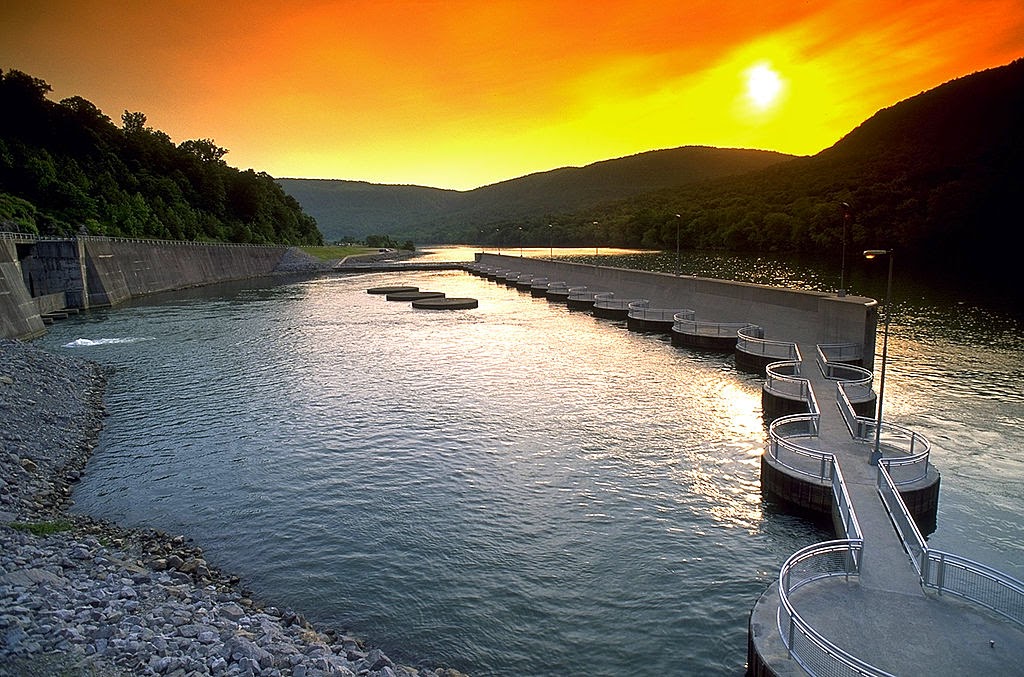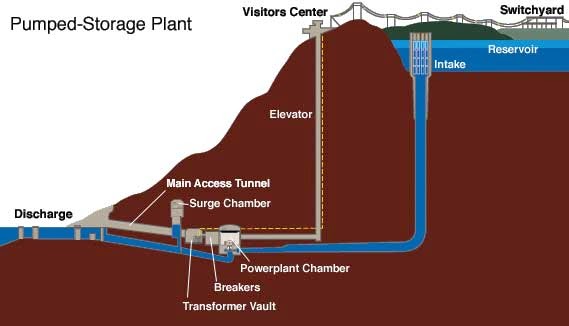Green Energy
- Coal To Clean Power: The Oregon Legislature Considers A Bill To Replace Coal-fired Electricity Generation With Clean Energy
By Amelia Schlusser, Staff Attorney The Oregon legislature is currently considering a bill that aims to reduce the generation andPGE and PacifiCorp own shares in the Colstrip Generating Station, a coal-fired power plant in Montana use of coal-fired...
- Costa Rica Just Went 75 Days On 100% Renewable Energy.
Well done Costa Rica, well done. The Cental American country has achieved a major clean energy milestone, meeting 100 percent of its power demand with renewable energy for 75 straight days. “The year 2015 has been one of electricity...
- Green Energy
What is Green Energy? Green Energy is the energy which is produced from natural resources like sunlight, wind, tidal wave and geothermal heat. It is also called renewable energy or alternative energy and sustainable energy. Green Energy...
- Wind And Solar Power Paired With Storage Could Power Grid 99.9 Percent Of The Time
Article published in www.sciencedaily.com on december 10th 2012 Renewable energy could fully power a large electric grid 99.9 percent of the time by 2030 at costs comparable to today's electricity expenses, according to new research by the University...
- Making 'renewable' Viable: New Technology For Grid-level Electrical Energy Storage Developed
Article published on http://www.sciencedaily.com, June 11th 2012 In the aftermath of the recent United Nations Rio+20 Conference on Sustainable Development, the focus of many industrialized nations is beginning to shift toward planning for a sustainable...
Green Energy
Closed-Loop Pumped Storage Can Support Grid Reliability During the Transition to a Renewably Powered Grid
By Amelia Schlusser, Staff Attorney
 |
| Tennessee Valley Authority's (TVA) Raccoon Mountain pumped storage plant has a 1,652 MW capacity. |
A Scientific American blog recently profiled the United States’ first energy storage plant. This so-called “ten-mile storage battery” was (and still is) a pumped-hydro energy storage plant operated by the Connecticut Electric Light and Power Company. The plant, which began operating in New Milford, Connecticut, in 1930, could generate up to 44,000 horsepower, which Scientific American’s Robert Fares deemed roughly equivalent to 33 megawatts of electricity. The pumped storage facility is still operational today.
According to Scientific American, pumped hydro is the most widely used form of energy storage in the U.S; in 2011, it provided 22 of the total 23 gigawatts of installed energy storage capacity in the country. And the technology has improved over the years, becoming larger and more efficient. Robert Fares reports that today’s largest pumped storage facility can generate up to 3,000 megawatts of electricity, which is roughly equivalent to the output of three nuclear generators.
Large-scale energy storage systems are more important today than ever. The energy mix in the U.S. is shifting away from dirty coal-fired power towards clean and sustainable renewable energy. Under EPA’s proposed Clean Power Plan, which aims to regulate carbon dioxide emissions from existing power plants under section 111(d) of the Clean Air Act, the shift from coal to clean power will continue to escalate in the next decade.
The transition away from coal will result in grid-wide reductions in baseload power resources and increases in variable power resources. The National Energy Regulatory Commission (NERC) released a report, titled Potential Reliability Impacts of EPA’s Proposed Clean Power Plan, which expressed concerns that changes to the energy resource mix under the rule could compromise the reliability of the U.S. power grid. NERC’s concerns draw from the fact that baseload resources inherently support the reliability and stability of the electrical grid. These resources can supply power to the grid when electricity demand is high and reduce their power generation when demand is low. Renewables, on the other hand, are variable energy resources, and the amount of power they send onto the grid fluctuates with the weather. Since grid operators must ensure that levels of power entering and leaving the grid remain in balance at all times, managing variable renewable resources can be a challenge.
The transition from coal to renewables, however, does not have to compromise the reliability of the grid. The Brattle Group recently reviewed NERC’s Initial Reliability Review and concluded that the Clean Power Plan is compatible with maintaining grid reliability. The Brattle Group’s report, EPA’s Clean Power Plan and Reliability, which was prepared for the Advanced Energy Economy Institute, listed energy storage as one potential technological solution to the reliability issues raised by increasing penetrations of variable renewables. NERC’s report also asserted that energy storage technologies could mitigate the reliability challenges presented by high levels of variable renewable power and argued that “their development should be expedited.”
 |
| TVA's Raccoon Mountain pumped storage facility is not closed-loop, but the general design is comparable to a closed-loop system. |
Closed-loop pumped storage systems offer a promising technological solution for integrating high levels of variable renewable power onto the grid. These facilities consist of two or more reservoirs located at different elevations. When power supply exceeds demand on the grid, excess generation is used to pump water from the lower reservoir to the upper reservoir. When demand later exceeds power supply, water from the upper reservoir is released through hydroelectric turbines back into the lower reservoir. A closed-loop system cycles water between reservoirs without drawing from or discharging to external water supplies.
According to the Energy Information Administration, there are currently 40 pumped storage facilities in the U.S. However, these facilities are all more than 20 years old. Robert Fares at Scientific American noted that plans to construct six major pumped hydro facilities were canceled between 1986 and 2006, “mostly due to market uncertainty.” Developing a pumped storage facility can be an expensive and drawn-out process, and until relatively recently our fossil fuel-dependent energy sector didn’t require substantial energy storage capacities.
This dynamic is starting to change. The transition from coal to clean energy is making large-scale energy storage a viable and valuable alternative to new fossil fuel plants. A number of pumped storage facilities are currently in the works throughout the country. Absaroka Energy is developing two closed-loop pumped storage systems in Montana. The company’s 250 MW Coffin Butte facility and 400 MW Gordon Butte facility both received preliminary permits from the Federal Energy Regulatory Commission (FERC) and are starting to commence site feasibility studies. In Washington state, the Klickitat Public Utility District (PUD) is applying for a FERC license to construct a 1,200 MW closed-loop pumped storage system on a wind farm in the Columbia River Gorge. And in Oregon, EDF Renewable Energy is pursuing a 600 MW closed-loop storage system outside Klamath Falls. According to the National Hydropower Association, developers have proposed to construct 31 gigawatts of new pumped storage capacity in the U.S.
Only time will tell whether any of these proposed pumped storage systems will ever become operational. However, it’s becoming increasingly apparent that energy storage may be the key to integrating large quantities of variable renewable energy onto the grid. Regulators should consider incorporating closed-loop pumped storage into their 111(d) state implementation plans, and establish policies that incentivize energy storage development.
- Coal To Clean Power: The Oregon Legislature Considers A Bill To Replace Coal-fired Electricity Generation With Clean Energy
By Amelia Schlusser, Staff Attorney The Oregon legislature is currently considering a bill that aims to reduce the generation andPGE and PacifiCorp own shares in the Colstrip Generating Station, a coal-fired power plant in Montana use of coal-fired...
- Costa Rica Just Went 75 Days On 100% Renewable Energy.
Well done Costa Rica, well done. The Cental American country has achieved a major clean energy milestone, meeting 100 percent of its power demand with renewable energy for 75 straight days. “The year 2015 has been one of electricity...
- Green Energy
What is Green Energy? Green Energy is the energy which is produced from natural resources like sunlight, wind, tidal wave and geothermal heat. It is also called renewable energy or alternative energy and sustainable energy. Green Energy...
- Wind And Solar Power Paired With Storage Could Power Grid 99.9 Percent Of The Time
Article published in www.sciencedaily.com on december 10th 2012 Renewable energy could fully power a large electric grid 99.9 percent of the time by 2030 at costs comparable to today's electricity expenses, according to new research by the University...
- Making 'renewable' Viable: New Technology For Grid-level Electrical Energy Storage Developed
Article published on http://www.sciencedaily.com, June 11th 2012 In the aftermath of the recent United Nations Rio+20 Conference on Sustainable Development, the focus of many industrialized nations is beginning to shift toward planning for a sustainable...
